-

Catalogue
You are welcome to browse the whole Astra Film Festival 2016 Catalogue here.
Read more ...
-
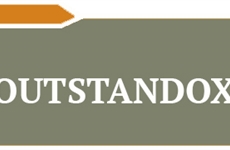
OUTSTANDOX
OUTSTANDOX brings together 8 films which put forth by way of an outstanding use of the powerful tools of documentary cinema a dissection of the ingredients and life experiences that shape our structure as individual and collective entities.DON JUAN, THE DARK GENE and THE NEW MAN approach, by different stylistic means, existential questions regarding the relation between our biological heritage and identity, while dignifiedly re-presenting the out of the ordinary biographies of three protagonists, each struggling, one way or the other, with marginalization. Just like the first two films challenge us in terms of looking into our own possible preconceptions in regard to people suffering from mental health disorders, such as autism or depression, and at once relativize the false boundary between normative constructs and otherness, THE NEW MAN, too, heads in a similar direction. Through a universalizing lens, it deals with a type of story that Queer Cinema generally tends to particularize, namely transcending gender role and identity. Here, instead, the specific matter of this “new man” being socially accepted is integrated as part of the wider picture, of being, first of all, accepted by one’s own family.Coming to terms with the past ties in, thematically, the whole programme, as can be seen as well in KEEP QUIET or DEPTH TWO, although this reconciliation, however, is measured at a different scale – that of collective recent history. From a narrative perspective, what’s at stake in both cases relies on the humanistic underpinnings of the confrontation between victims and aggressors, revealed through examining the ballet between historical so-called losers and winners involved in collective tragedies such as the Holocaust or the ethnic cleansings from the Balkans during the Kosovo war.Infringement and protection of Human Rights matters is also a starting point for other films in the programme, such as the ciné-verité-inspired documentary EMPLOYMENT OFFICE or the poetic dystopia DEAD SLOW AHEAD. Although they equally set out to expose labor relations, each of them allegorically and subtly speculates a contemporary state of social skepticism, directed towards two opposing systems: the collapsing model of the welfare state and the adrift fate of capitalism, seen as an alienating piece of machinery. Consequently, the constant reconfiguration process of our nowadays globalized world inevitably impacts the worldview of traditional and once isolated communities, such as the Ilparakuyo Maasai from Tanzania, whose transformation is observed over time in the anthropological documentary CHANGA RVISTED. (Andreea Mihalcea)
Read more ...
-
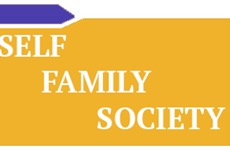
SELF, FAMILY, SOCIETY
No man is an island. The construction of the self, the dynamics of family relations and social configuration are concepts difficult to separate from one another. Whether we like it or not, they’re constantly influencing each other, as can be seen in any of the seven documentaries from the programme SELF, FAMILY, SOCIETY.3 x PERSONAL MATTERSHow does one carry on, days on end, when you’re aware that one of your children isn’t going to have the chance of leading a normal life? For the shooting of the observational documentary A MERE BREATH, awarded Heart of Sarajevo this year at Sarajevo IFF, Monica Lăzurean-Gorgan followed the intimate texture of family relations, as they unfolded inside the Sicrea family in the course of seven years. Dobrin Sicrea, a devoutly religious man, and young director Sára Haragonics, author of the participatory documentary COMING FACE TO FACE, ask themsleves – one as a father, the other as a daughter – if they’ve done everything they could to save their beloved. Forms of testing family ties is the subject matter also in the subtext of Klára Trencsényi’s TRAIN TO ADULTHOOD: three preadolescents are forced in the light of financial issues to face too soon grown up worries, at a time when the end of their childhood is likely to be taken over by uncertainty and disillusionment.MOTHER IN ROMANIACHAT WITH ALICE by Isabela Țenț, a portrait of a 19-year old mother working in the field of video chat to support her family, plays upon the contradictions between the persona Alice constructs for herself and the normative expectations one might have in regard to motherhood. Angela, too, is a young mother, Botond Püsök’s homonym titled documentary X-raying a series of wider issues young girls from the Roma community from Transylvania deal with such as the lack of education, gender inequality or the persistency of traditional customs. The causes of what’s hindering young women from having a child in Romania are of a pervasive nature, regardless of the social category they belong to, as is pointed out in the sociological documentary by Jesús del Cerro, PREGNANT IN ROMANIA. Here, the lack of support offered by the state through incoherent governmental policies is correlated with a predominantly conservative collective worldview in regard to the condition of women overall.BE NORMAL OR BE HAPPYAGE, an anthropological kaleidoscopic essay by Veronika Hafner și Nancy Camaldo, questions how our perspective on happiness, love, death and on how we value life changes over time, with the help of more than a hundred people of different ages, starting from 0 to 100. The film also conveys the on-going shift in the way we approach the playfulness of life, social conventions, normative concepts and our own body, while generally repressing an inherent life premise, namely that the process of ageing begins at birth. (Andreea Mihalcea)
Read more ...
-
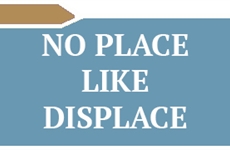
NO PLACE LIKE DISPLACE
Countering the limitations of empathy and going against gross simplification, “No Place Like Displace” presents a kaleidoscopic view of the imperceptible ways in which lives are forever altered in a continuous cycle of people caught in-between worlds.With “Those” we explore how quick we are to judge and reject those different from ourselves, while “In Between” debunks most of the stereotypes associated to “Others”. While the first short uses smartly balanced humour to investigate the absurd mechanics of paranoia, the second takes an intimate approach to examining the limits of emotional resilience in the case of those who voluntarily leave their homes in order to help those forced into leaving.Sometimes it’s not even war, but the judicial system that inflicts displacement. “Trapped By Law” tells us that 30 years are not enough for war refugees to find the way to normal life. Although you might feel you belong to a place, convoluted concepts of nationality come in the way of ever being fully accepted. History never forgets.Nor does it change. “Abdul & Hamza” demonstrates that what we are in fact witnessing is a never-ending cycle. When we think the roaming has ended, we realize we have been fooled. It never stops. Once you’ve left home, it's unlikely you will ever find it again.
Read more ...
-
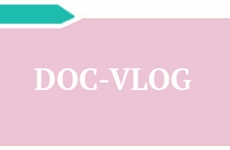
DOC-VLOG
In these times of ours, most people feel the urge to broadcast themselves and share every trifle of their existence. Documentarists can feel it too, but not being ''most people'', we can expect their sharings to be of consequence in form and content. Their journal records can take the form of intimate confessions about their personal experiences in search of their identity, a chronicle of a turbulent period of their lives, or an attempt to understand social inequities in their own communities through fist-hand experience.An intimate diary, a journal of war, pages in the chronicle of the Ukrainean Revolution, moments on the Euromaidan, the statement of a generation, coming of age, ''Alisa in Warland'' is something of it all. The outbreak of the revolution sets a gap in the lives of the two authors, Alisa Kovalenko and Liubov Durakova. From then on, there's a 'before', meaning a normal life, and an 'after', spelling war, death, struggle for freedom. It is a documentary made with burning emotion about a personal story which is the story of her generation, about becoming adult the hard way, about understanding the values of life. With ''Czech Against Czechs'', Tomáš Kratochvíl tackles the issue of the Roma communities living under threat in marginalized getto-like neighbourhoods. He finds that nationalism often at its extreme is well-set in Czech society, so much so that for most people there are the „whites“, who are ok, and the ''blacks'', who are a problem to be taken care of (violence and death are not excluded as potential solutions). Documenting the first hand experience of a 'white' (the filmmaker) living among the 'blacks', Kratochvíl creates a powerful film and the personal involvement and the immediacy of the images make it even more so.In a small local television station in a Georgian town, its sole reporter busies herself with covering everything that happens in the community. 'The Dazzling Light of Sunset' by Salome Jashi, winner of the Regard Neuf Competition (Visions du Réel, 2016) draws a pseudoethnographic portrait of a community in Georgia. This cinematic kaleidoscope of characters, places and events unveils the life of the local community and its hybrid values. The act of broadcasting itself is more important than having something worth broadcasting.''The Halves'' (Alexander Zarchikov) has a first part happening at sea, and a second which follows a journey on the Siberian roads. Initially we are on a cargoboat sailing from Japan to Vladivostok, while the crew busy themselves cutting in half the whole cargo of Japanese cars. It is a scheme to elude Russian customs fees. Once in Russia, the cars are put back together and sold. Half filmmaker and half sailor cum environmentalist, Zarchikov seems to have his life cut in half, same as the cars and the structure of his documentary itself. He brings in the selection this deeply personal film in which he rummages about motherland, religion, nature, and rootlessness. (Adina Marin)
Read more ...
-
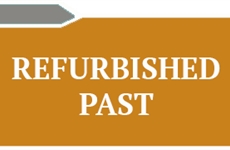
REFURBISHED PAST
The more recent the history, the less attractive its relics. There is no patina to cover their ugliness. The unpleasant or even sinister meanings they carry have not yet been blurred by the passage of time. Disturbing as they are, these remnants are bound to populate our existence until they fall to pieces or get old enough to become appealing. The documentaries in this theme section are about people who, instead of looking at them with nostalgia or with indiference, found in vestiges of the recent past a source of inspiration and a fertile ground for their entreprenorial skills.A small airport near a German town, once of some military importance, since it was used by the Luftwaffe and later by the Soviet Air Force, becomes, in our globalized times, of interest for a Chinese businessman whose ambition is to open an economic and cultural gateway from Europe to China. “Parchim International” walks on the fine line between perseverance and utter folly and takes us along a journey of absurd humour, grit and a little bit of culture clash.The manager of a cinema theatre in a provincial Romanian city does more than reminisce about good old times when, besides being a social glue, going to the movies was one of the few entertainments available and people formed long queues in front of the box office. “Cinema, mon amour” tells the story of his don quixotesque struggle for the survival of the cinema theatre he has worked in as a manager for the most part of his life.'In 'The Block'', the relic of the past is a person. A former director of an important communist enterprise, the protagonist, now a pensioner, exercises his leadership skills on the occupants of the block of flats of which he is the administrator. Observing his daily efforts to keep things going and relationships between neighbours at the level of decency, the film explores the rich social and material universe of the typical Eastern-European flat and its dwellers. (Adina Marin)
Read more ...
-

CIRCUMSCRIBED SPACES
The places we live in are drenched in our personalities, one could say. Imperceptibly so, they shape our day to day experiences in the most minute of ways, while we ourselves continuously model them into to new forms.Limited spaces create microcosms incessantly interacting with one another as organic parts of a larger whole, as both “Anthill” and “1 Building and 40 people dancing” demonstrate. The films observe a garage complex and social housing building, respectively, in order to capture recent history’s aftermath by looking at a small Russian community in Tallinn, or to witness how proximity can act as a driver of empathy and complicity.These capsules can become fertile ground for the emergence of esoteric communities, such as the IT group in "Techsquat", functioning as a fraternity with a strict code of conduct.In face of the uncertainty of success and social ideals of independence and masculinity, in “Techsquat” five young men turn to one another, as they all strive to pursue their dreams.Self-imposed limitations, this time of a cinematic nature, are also the main motif of “Pallasseum – Invisible City” which transforms the cinema screen into a triptych canvas on which the filmmaker can play freely with the audience’s expectations of spatial and causal continuity.It is here, in this uncertainty of what is real and what is not that we find ourselves the living embodiment of the places we inhabit, a collage of hidden dreams and obsessions but also a piece of memorabilia of the life lived so far. (Diana Mereoiu)
Read more ...
-
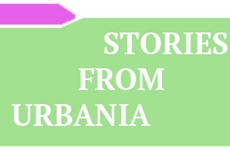
STORIES FROM URBANIA
The urban world can be a playground or a theatre of war. It may offer a comfortable, even luxurious life, or squalor, insecurity, fear for one's own life. The city breeds its own fauna, who knows to adapt chameleon-like to the urban backdrop to survive. The city is fascinating for everybody, and for artists in particular. Stories from Urbania brings four documentary cinema visions of the urban world. With ''City Play'', Paloma Yañez Serrano presents her research "City Play: Exploring temporality and space in Cairo’s play dynamics" undertaken for the MPhil in Ethnographic Documentary for the Granada Center of Visual Anthropology at the University of Manchester. The project originated in the author's reaction to the degradation of the violent confrontation between the different social players in Cairo. The split screen shows simultaneously the constrasting roles children have in the city and how they change as they grow up. It is a technique both interesting and meaningful for a documentary experimenting with the thin line that distinguishes play from reality. In ''Govandi Crime aur Camera'', the making of the documentary mirrors its subject. A goup of young filmmakers produce and broadcast on youtube a local crime show modelled on a popular crime series running on Indian TV. A second group of young filmmakers stumble upon the subject and it becomes obvious that there is great material in it for a documentary. The first group come from the slums situated by India's largest dumping ground, while the second is a group of filmmakers from the Tata Institute of Social Sciences located in the affluent part of the city. They share the passion for filmmaking and the desire to create compelling content Winner of The Metropolis Grand Jury Award at Doc NYC (2014), Thomas Wirthensohn's feature debut ''Homme Less'' is a documentary about the love-hate relationship of a hundred percent urban creature, ex-fashion model now fashion photographer Mark Reay and the city of New York. From all outside appearances, the handsome and always dapper ex-model lives the glamorous New York City life that many would envy. The harsh reality is that the place he calls ''home'' is a dark hideaway on the roof of a building, where he must sneak unnoticed by the residents. The most obvious small gestures of daily routine, like of washing up, teeth brushing, changing clothes, are challenges that must be approached with inventiveness. The film unveils in a skillful way how the protagonist shapes his life to the rules of the unwritten city life code of conduct in order to survive with grace and elegance.Alexander Hick makes an essayistic inquiry into survival and adaptation in ''Scorched Water '', a documentary about Mexico City under the metaphoric form of Axolotl, a.k.a the Mexican walking fish, a fascinating creature that is capable of regenerating itself, can morph into diverse shapes, and has the grothesque appearance of a grown-up embrio, due to its neoteny, meaning that it retains characters of the larval stage all through its adult life. Same as the creature Axolotl, the places, the people, the protagonists, the atmosphere, everything changes gradually while the film itself goes through metamorphosis. (Adina Marin)
Read more ...
-
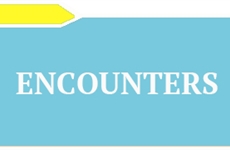
ENCOUNTERS
Both films in the section ''Encounters'' talk about meetings of civilizations, but in an entirely different tune. An annual pilgrimage of a large group of Hasidic Jews to a small Christian Orthodox city in Ukraine can be described as a clash between civilizations, especially when not all the pilgrims are driven by piety and the local population are instigated by far-right extremists. Luckily enough, it doesn't have to be always like this, as the second film in the section reveals by telling the story of an uncanny meeting between Vietnamese farmers and European classical music.With ''The Dybbuk. A Tale of Wandering Soul'' award winning filmmaker , writer and academic and Krzysztof Kopczynski touches on the issue of civil rights and human rights with two clashing groups. Tens of thousand Hasidic Jews arrive in Uman, Ukraine, on an annual pilgrimage to celebrate the Jewish New Year at the grave of their holy leader. Their arrival is met with the prejudice of the locals, and the ire of the Ukrainian far-right. It is understood that the local Ukrainians want to build monuments for their heroes. But these are the same former guerrilla leaders responsible for the massacre of thousands of Jews. On the other hand, the Hasidim claim that their ancestral inheritance and human rights are at risk. They want to enjoy the right to worship and the right to visit places of historical and religious significance for them. The film observes and discovers how the contrasting two parts meet on the same ground and conveys the mounting tension of the oncounter.Rather than creating a narrative, Diem Ly Vu observes in ''Violin Farmers'' the odd reality of a classical music orchestra functioning in a Vietnamese village. The orchestra came into being six decades ago and has been alive all these years because these farmers showed such a passion for art that they learned to play another civilization's music on an instrument coming from another continent. The filmmaker sets a steady rhythm for his documentary, carefully avoiding to treat the subject as a mere oddity. Instead, we get an intimate and touching slice in the daily lives of some inspiring people.(Adina Marin)
Read more ...
-

INSIDE RADICAL ISLAM
Carefully balancing its perspectives and avoiding gratuitous exploitation of shocking imagery, “Inside Radical Islam” offers a 360° view on the causes, inner mechanisms and aftermath of religious extremism, taking as case study Islamism.With “Among the Believers” we dive head-first into the snowballing effect of poverty and violence breeding poverty and violence, while “The Empty Room” brings to light those neglected in the discussion on terrorism, the families of those leaving Europe to wage jihad. However, there is hope to be found, and it lies in education. “Sonita” is the improbable success story of an 18 Afghan refugee going against rigid customs of forced-marriage, finding her way as a student and aspiring rapper in the US.The impact of the programme is twofold: it raises awareness of fundamental issues, and supports education as a means to fight violence and not reiterate it. Most importantly, however, it shows us that radicalization is not the product of primitivism, but of a power void. While we are now witnesses, let us remember that we are not far along from our roles in history as purveyors and participants. The main quality of the programme lies in its insistence on not issuing verdicts on a way of life different from our own, while showing a genuine desire to comprehend. (Diana Mereoiu)
Read more ...
-
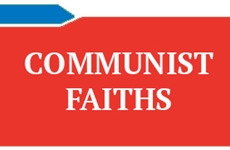
COMMUNIST FAITHS
Both films in this section are, each in its own way, about the victims of communism in Romania, in the troubled years that followed the end of WW2. Like elsewhere in Eastern Europe, the small communist party in Romania was rising to power far beyond their numbers and seeking to obtain totalitarian control. Those who dared stand against them (the partisans) risked annihilation. God Save The Partisans recalls the heroic resistance some people put up against the spreading communist terror, showing a reckless courage and having nothing to rely on except the hope that ''the Americans are coming''. It is an emotional recollection, through the life story of an extraordinary woman, told with the help of archive material interwined with interviews. The Red Empress - The Life and Adventures of Ana Pauker makes use of thorough research and reliable voices to go beyond the bidimensional character and deconstruct the public image of one of the most hated communist leaders. Eventually, she herself became a victim of political purges and the internal struggle for power. No one was safe in those troubled times. As Winston Churchil had proclaimed, an Iron Curtain had descended across the Continent. (Adina Marin)
Read more ...
-
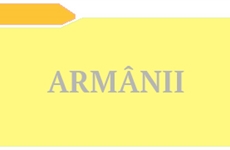
AROMANIANS
The very instant we put together the words ''Aromanian'' and ''film'', a name comes forth: The Manakia Brothers. Who are they? And who are the Aromanians?The Aromanians (Vlahs), a people more than two thousand years old, had had their days of glory in times gone by. Today, the relatively small communities that remained are scattered all over the Balkans, in Greece, Albania, Bulgaria, Serbia, Makedonia, and Romania. There is an enigmatic air about them. There is very little known about their ethnogenesis and their history. But when it comes to the past century or so, there is plenty to be seen, about them and the other peoples of the early 20th century troubled Balkans. Thanks to the Manakia Brothers.Yanaki (1878-1954) and Milton (1882–1964) Manakia were photography and cinema pioneers who gained reputation for bringing in the first film camera and creating the first motion pictures on the Balkan Peninsula and the Ottoman Empire.Yanaki opened his first photographic studio in 1898, in Ioannina (today in Greece), and asked his brother to join him in the business of photography. In the early 1900s, their work became known across the Balkans and they were appointed as official photographers of the Sultan of the Ottoman Empire, and later of Royal families in the Balkan countries.Milton mentions in his memoirs that Yanaki traveled a lot during 1905 to European capitals. He brought back a 35-mm Bioscope film camera, with which they shot a 60-second footage of their grandmother Despina, aged 114, at the spinning wheel. Allegedly this is the first footage ever shot in the Balkans. Yanaki and Milton shot a number of films, mostly documentaries, covering aspects of life in the city of Bitola (now in the republic of Macedonia) such as popular dances, religious rituals, weddings and funerals. They made a newsreel on the visits of Sultan Mehmed Rashid V to Salonika and Bitola in 1911. They also took thousands of photographs. Their vast visual legacy is kept in archives in Macedonia, Greece and Romania.In one way or another, the three documentaries in our selection revolve around the Manakia Brothers.With ''Armânii, at the famous Manakia to I'm not famous...'', filmmaker Toma Enache embarks on a cinematic voyage that covers 100 odd years and takes him from the earliest Manakia moving pictures to the fist ever feature film spoken in Aromanian.Eliza Zdru's ''The Manakia Brothers. Diary of a long look back'' is a sentimental travelogue through places and times past in a quest for traces of the Manakias and a search for her own identity.With ''Torna, torna, fratre!'' Marian Voicu makes an analysis from the Aromanian perspective of the origins, language and name of the people. The shootings were made in Albania (Moscopole, Korcea), Makedonia (Krusevo, Bitola) and Greece (Sirako, Avdella, Pirivoli). They put together a mosaic of places and people resulting in the portrait of a lost world. (Adina Marin)
Read more ...
-

CITIZENS OF THE ONLINE WORLD
For all of us who use Internet, and thus are citizens of the online world, these three films are a trip to the unknown sides of the land we are stepping in when we get online, a land which seems to be full of unexplored features, legislation and geography.Herzog’s own voice is guiding us in Lo and Behold with the same intellectual excitement as we have been led when discovering the nature of NATURE in his earlier film Grizzly Man. In this film we meet people whose personal passion, imagination, technical skills and creativity have contributed to invent and to further shape the world we know today as the Internet. Unlike in the physical world, concludes the film, the online space can still be stretched and expanded wherever a hotspot of inventive, imaginative, creative ideas and technology meet.If it were to further explore the human geography of this online land, the biggest country today for sure would be the country of the Facebook community, comprising 1.7 billion active users, inhabitants. “Giving voice to people” is the goal of this social network, publicly declared by its inventor and owner. And the citizens of this online country should be indeed the happiest in the world, given that they are all linked based on “Facebook friendships” and the voluntary given “likes”.But “What are the laws in the nation of Facebook and what happens if you break them?” is the question that starts the journey of the next film. Gottschau invites us to follow the practice and consequences of law reinforcement, the censorship used there on a daily basis, by presenting some cases out of millions happening every day: as personal photos and data are deleted or thousands of Facebook accounts are suspended, we come to know that the final goal of this platform has nothing to do with freedom of expression and that this social network seems to be nothing but a mere surveillance tool of humanity on an unprecedented scale. Facebookistan, as the title of the film suggests, seems to be a single handedly governed sultanate over one seventh of the population of the world today linked by Facebook, and the underlying goal of its laws seeks nothing but to obtain monopoly on their users’ personal data. Down the deep, dark web invites us to dive beneath the ‘regular’, ‘official’ search engine of the indexed, tracked online world, and into the underbelly of the Internet, the digital underworld. Tor is not only a huge black market of illegal products, but also a black market of free ideas, free recipes for medicines and design for 3D printed objects, and it seems to be the only place on the Internet where the flagship of the idea of free Internet can still be found, especially on the territory circumscribed by the activity of cryptoanarchists who are using encrypted messages and currencies. (Csilla Kató)
Read more ...
-
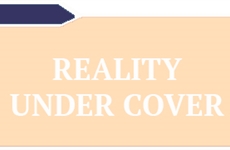
REALITY UNDER COVER
Based on the multiple limitations of what one can sense or accept as evident truth relying on the actions of the other person, the films selected in “Reality Under Cover” present four of the most incredible contemporary stories, all of them pushing the limits of our imagination, about the way people shrewdly succeeded at misleading others around them in the long run, with a high risk of bearing serious consequences.The question is what were the blunders in each case that led to these situations?My friend Rockefeller shows us how wherever Gerhartsreiter constructs one of his con man identities, the loose fabric of the local community network could well allow him to develop and maintain his very detailed, concocted story, and the locals would not realize he was putting on an act. Nevertheless, the film does not elucidate how he could maintain his fabricated identity as to his own wife, with whom he had a child.The film The confessions of Thomas Quick reveals how a man’s stating to have committed more than 30 murders could be enough as single and utmost judicial evidence for him to be convicted. The weak link seems to have appeared during therapy, as therapists got carried away with discovering the perfect validation of their initial hypothesis in his confessions.The iconic figure of false prophets auguring the Apocalypse is very well known in Christian culture as far back as the Middle Ages. Right between your ears allows us to figure out what are the means through which Camping backs up his prophecies before crowds with convincing evidence. The precise date of the end of the world is given out through the power of the Family Radio trust’s PR work: tens of radio stations across the US, meeting with the radio audience, an interactive radio program maintained for decades, as well as the distribution of thousands of multi-lingual promotional materials both online and in print.Somehow differently, in The Applause man we discover a strange personality. Unlike the protagonists from the other films in this section, this character was not consciously constructing a fake identity. At first sight, he seems to be nothing but a rogue or a simple “thief” of fame and success. The mere fact that he is getting past thorough security systems at huge concerts or television shows in order to get to the place of applauses, brings him huge publicity, and popularity. His story allows us to find out that at the core of his actions lies a strange, almost manic dependency, an unexplainable urge to become part of the energy that bursts out when people applause.(Csilla Kato)
Read more ...
-
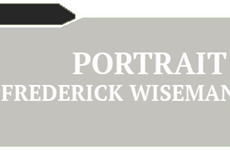
PORTRAIT: FREDERICK WISEMAN
A Martian sends a postcard homeWatching Fred Wiseman’s films often reminds me of something the now departed British film editor, Dai Vaughan, once said: ‘the problems of documentary film are the problems of life’. What I think Vaughan meant was that the ambiguities and the radical indeterminacy of other people’s meaning and intentions are as complex to deal with in film as in life. Understanding other humans’ actions, grasping the context that people believe they are acting in and interpreting the meaning of their actions, are one of the great challenges of our lives and perhaps the basis of all the performance arts.More perhaps than any other filmmaker, Wiseman has worked to turn the problems of life into problems of art. As the documentarian who has made the greatest single contribution to world cinema, and one of whose earlier works (At Berkeley, The Store) has been screened at earlier editions of Astra Film Festival, we thought this a good time to bring a more substantial reflection on this unique oeuvre to the Astra audience.We have, we realise, set ourselves an impossible task - to offer a taster of an oeuvre which stretches over fifty years and nearly as many films. What hubris! Outside of esoteric film circles, Mr. Wiseman is not so well known here – or, better, known only indirectly, through his influences. You can the Wisemanesque stance in the films a well known Romanian filmmaker Cristi Puiu, for whom film also needs to bear witness to the nature of people in our world.So, we have quite deliberately chosen a surprising pairing. We bring you two of the cineaste’s most profound reflections on the regimented interventions of modern society. In Domestic Violence I and II we experience the irresolvable moral ambiguities – the radical undecidability faced by agents who try to intervene in the lives of profoundly troubled families. Alongside this high seriousness we play what at first sight might seem like a slighter work: one of Wiseman’s dance films - this one set in a cabaret - and a famous Parisian tourist destination to boot. But as you will see, Crazy Horse unfurls into a deeply challenging engagement with the very idea of art, beauty and the nature of spectacle.Crazy Horse also a film that sitting side by side with his apparently more ‘engaged social commentary’ films helps us understand the unifying vision behind the entire oeuvre. In all the films in our selection, as in the rest of his work, Wiseman brings with him an attitude that interpellates his characters as public men and women, calls upon them to give a public account of themselves – an account to which he will bear fair and honest witness. Domestic Violence I and II come from Wiseman famous series of ‘institutional films’ – films in which, as he ironically put it, ‘the place is the star’. At the outset of his career a number of commentators wrote as if this series of films were sociological investigations of ‘the state of America’ – admittedly not a top-down ‘state of the nation’ view but an ethnographic view from the bottom up: local schools, a police station, a hospital, a department store, a ward where the great American taboo – death - is daily fare, and so on. The huge renown of his long-banned, first film, Titticut Follies (set in a prison for the criminally insane) strongly shaped this one-sided indeed misleading view because more than any of his later works it can be read as an active critique of ‘the system’. But Titticut Follies is firstly exceptional and watched today looks as far from a polemic as you are likely to get.What becomes clear watching a film like Crazy Horse, is that Wiseman brings the same skeptical, professional distance to his work in a high-end strip-tease bar as to his superficially more engaged work. The true character of all his films derives, I would go so far as to say, from the filmmaker’s personality – the cool, ironic east coast regard of a true Tocquevillian American. In his great ethnography of the American public imagination, On Democracy in America, Tocqueville talks of the strange restlessness of Americans that makes them “serious and almost sad even in their pleasures”. I see something of this in Fred Wiseman.The other crucial thing about this work is the author’s radical rejection of the drama/non-fiction divide. Wiseman is a filmmaker tout court. Like many of today’s documentarians, his films are to be understood as fictions or reality fictions if you will. In 2014 he said, “I think I make dramatic narrative movies, that can be as funny, sad, tragic as normal regular fiction films.” More than that: “I think my movies are more novelistic than journalistic…I do not like simple expose films. I am interested in the complexity and ambiguity of [human existence, ed.]. I like to make films which in some way suggest the enormous complexity of the subject matter.” (Frederick Wiseman about his aesthetic, video interview HUFFPost 2014, 1,10-1,20 min.)All cinema is a collaboration – non-fiction relies on the trust of its real life heroes in those who will portray them. It is this characteristic of allowing his characters their best chance at self-expression and the professional distance the filmmaker cultivates to enable this that lies at the heart of Wiseman’s greatness. So, the genius lies in part in the distance Wiseman establishes between himself and his subjects. It is easy for an anthropologist in a foreign land to feel like a Martian sending postcards home. Wiseman’s achievement rests on having become a Martian in his own land – revealing patterns that are so familiar to us that we have stopped noticing them; and in so doing he makes us confront our lives as if strange and alien forms.Another way of saying this, is to observe how Wiseman though not quite ‘a master of suspicion’ in the sense Marx, Freud and Nietzsche were, shares their skepticism about human pretension. In this sense Wiseman is like those social scientists – Freud included – who adopt something of the stance of the detective – following the cultural spores, tracking their traces in the lives of the individuals he brings to us. And like a true detective his most profound commitment is to the truth of the situation he finds himself in as he films. Famously editing his work for three or four times longer than he filmed, in that process he struggles to find the truth of the pro-filmic moment – but he does so, paradoxically, by using the full range of fictionalizing tricks of cinema.Tocqueville’s is a recurrent spirit for me haunting my appreciation of Wiseman’s work. The great Frenchman saw that democratic principles and equalitarian social conditions gave rise to what he, for the first time, named “individualism" - a condition that tended to shrivel a man's consciousness of solidarity with his fellows, throwing him forever back upon himself alone and threatening to "shut [him] up in the solitude of his own heart”. For me, all of Wiseman’s work is a heroic engagement, a battle even with that condition. America has contributed the idea of happiness to our understanding of civilisation itself. In Frederick Wiseman it has provided us with perhaps the most penetrating observer of a civilization where the realisation of happiness is as elusive as the ubiquity of its promise.The great achievement of Mr Wiseman’s oeuvre can, we hope, also be read by the sheer variety of the subject matters he focuses on in his films inviting the public to dive in the densest and deepest levels of human interactions as it happens in the terrain of:Educational institutionsHigh School I (1968), High School II (1994), At Berkeley (2013),Research institutions- Primate (1974), Zoo (1993)Legal/Police institutions- Domestic Violence I (2001), Domestic Violence II (2002), Law and Order (1969), Juvenile Court (1973), State Legislature (2006), Welfare (1975)Health institutions - Hospital (1970), Near Death (1989), Titicut Follies (1967)Institutes for disabled people - Adjustment and Work (1986), Blind (1987), Deaf (1986), Multi-handicapped (1986)Army- Basic Training (1971), Manoeuvre (1979), Missile (1987), Sinai Field Mission (1978)Cultural institution La Danse (2009), despre Corpul de Balet al Operei Naţionale din Paris, La Comedie Française (1996), National Gallery (2014)Religious institute- Essene (1972)- Benedict monastarySport - Boxing Gym (2010), Racetrack (1985) Commercial world, companies: - Meat (1976), Model (1980), The Store (1983), Crazy Horse (2011)Community places: Aspen (1991), Belfast, Maine (1999), Canal Zone (1977), Central Park (1989), Public Housing (1997), In Jackson Heights (2015) Michael Stewart, UCLFounding Director Open City Documentary FestivalSeptember 2016
Read more ...
-
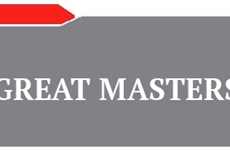
GREAT MASTERS
Four powerful voices of documentary film will be heard this year at Astra Film, through their latest films. We get the vision of some of the greatest masters on issues which stir the world today or troubling facts of recent history, on the yet unknown impact of connected lives in the online world, and on the art of cinema itself.
Read more ...
-

SPECIAL
Opening film, concerts, special events, special screenings...
Read more ...
-

THE FUTURE IS NOW
Astra Film Festival 2016 brings a brand new programme of immersive documentaries made with the use of up to date technologies for various platforms: online interactive 360° webdocumentaries, VR and 360° video projects for individual viewing, and full-dome films designed for dome cinema theatres, that preserve the classical experience of collective viewing.
Read more ...
-

DocumentaryTank@AFF
The industry programme at Astra Film Festival 2016 aims to reflect the key industry topics of the day and invites its guests and...
Read more ...
-

CONCERTS & EVENTS
High points in the programme of the 2016 edition are the live musical performances which will entertain film buffs present in Sibiu. The screening of the films in the Aromanians section will be followed by a fabulous concert of Aromanian music and a concert given by Mara & Band on Tuesday, the 18 of October, at 10:00 pm at Thalia Hall. The band Kana Jambe led by Dan Bursuc will perform live on Thursday, the 20 of October, at 8:30 pm at Thalia Hall before the screening event of the film The New Gypsy Kings (directed by Liviu Tipuriță). On Saturday, the 22 of October, following the Gala Awards, Moonlight Breakfast will go on the stage at Thalia Hall at 10:00 pm. This year’s live shows will indulge everybody, as the mosaic of music genre matches the diversity of the AFF programme.
Read more ...